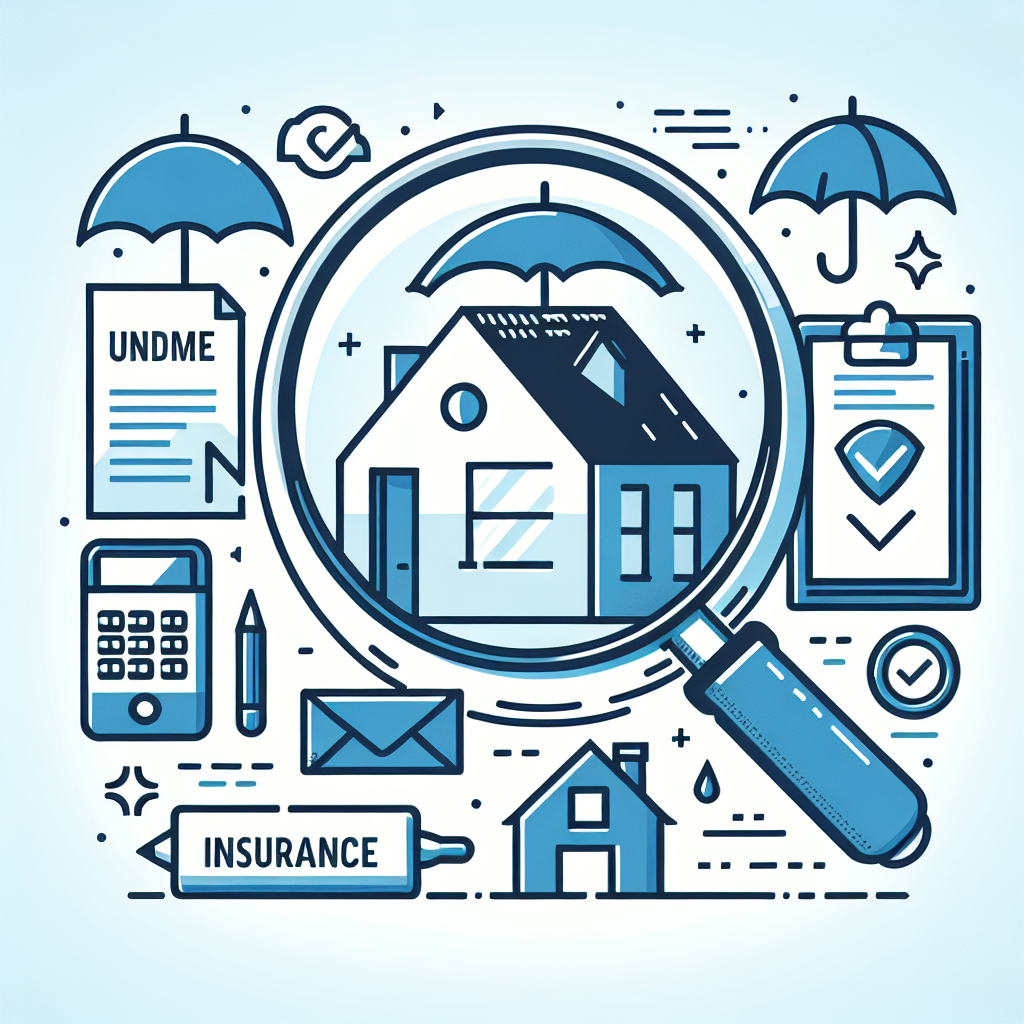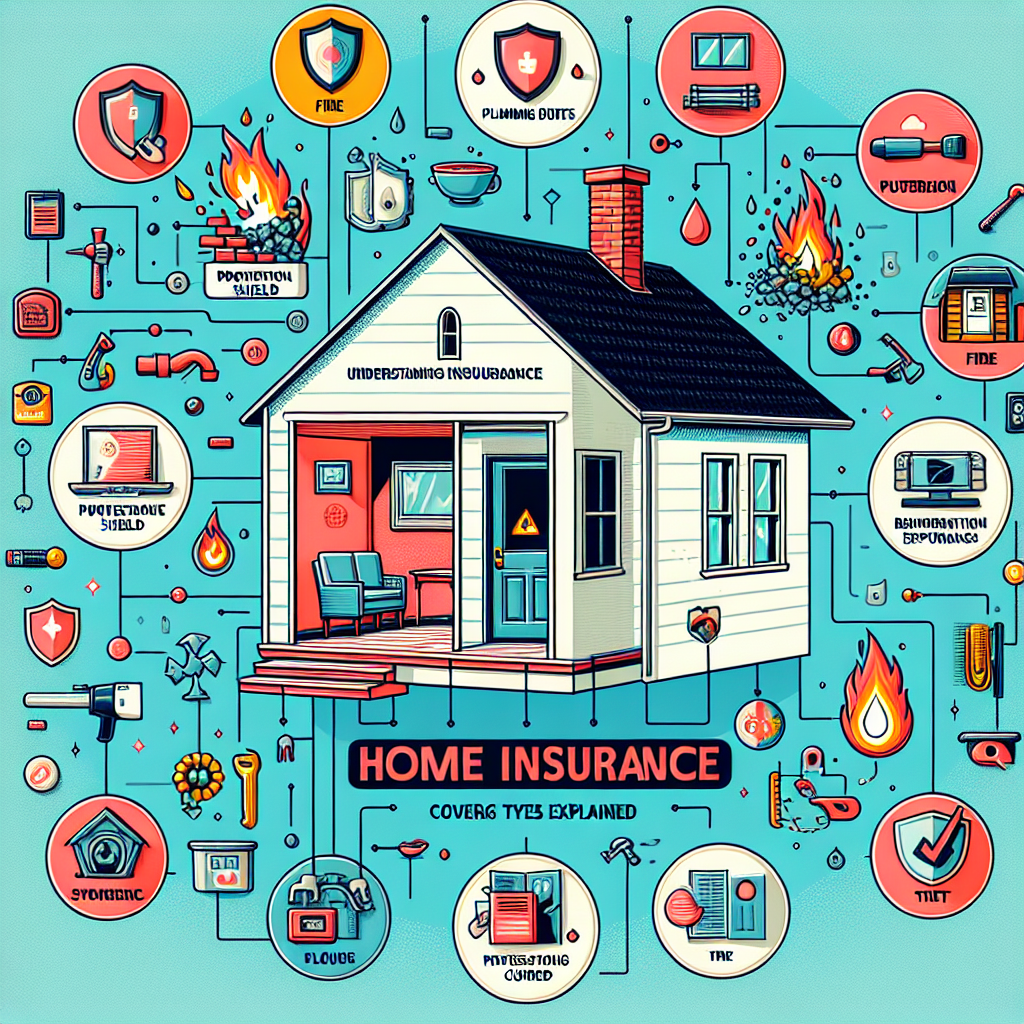Filed under Home Insurance on
What Is Home Insurance Coverage Explained

If you have ever stared at a policy packet and wondered what you are really buying, you are not alone. Many homeowners search for What Is Home Insurance Coverage Explained because they want a clear, no-jargon answer. This guide walks you through the essentials, the exceptions, and the smart add-ons so you can confidently protect what is likely your biggest investment.
A plain-English answer
Home insurance (often called homeowners insurance) is a contract that pays to repair, rebuild, or replace your home and belongings after a covered event, and it also shields you financially if you are found legally responsible for injuries or damage to others. Think of it as a financial safety net for disasters you cannot easily predict or afford out of pocket.
If you have been looking for What Is Home Insurance Coverage Explained in one line: it is a package of protections—property, personal belongings, loss of use, and liability—activated by covered perils, with limits and deductibles that you choose.
The building blocks of a home insurance policy
Coverage A through F: your policy’s core
Most standard homeowners policies (such as HO-3 forms in the U.S.) are organized into labeled sections. Understanding these is the fastest way to decode your policy.
Coverage A: Dwelling — Pays to repair or rebuild the structure of your home (walls, roof, built-in appliances) if a covered peril causes damage. Your Coverage A limit is the anchor for the rest of your policy.
Coverage B: Other Structures — Covers structures not attached to the home, like a detached garage, fence, or shed. Often set at 10% of Coverage A by default.
Coverage C: Personal Property — Protects your belongings, from furniture and clothing to electronics. Usually 50%–70% of Coverage A, but you can adjust.
Coverage D: Loss of Use — Pays for additional living expenses if a covered loss makes your home uninhabitable—hotel stays, extra meal costs, temporary rentals.
Coverage E: Personal Liability — Provides legal defense and pays judgments if you are found responsible for injuries or property damage to others, on or off your property.
Coverage F: Medical Payments to Others — Covers minor medical expenses if a guest is injured on your property, regardless of fault, typically with lower limits.
When people ask What Is Home Insurance Coverage Explained, this A–F framework is often the clearest starting point. Each coverage has its own limit and can be customized to your needs.
Perils: what events are covered?
Policies cover damage caused by specific events—called “perils.” There are two main approaches:
Open peril for the dwelling: Your home is covered for all causes of loss except those explicitly excluded. This is common in HO-3 policies and is broader than named-peril coverage.
Named peril for personal property: Your belongings are covered only for the perils listed, such as fire, theft, vandalism, windstorm, and more. You can often upgrade to open-peril personal property coverage via endorsement.
Key exclusions tend to include flood, earthquake, normal wear and tear, neglect, and sewer backup—though endorsements can plug several of these gaps. Understanding perils is central to What Is Home Insurance Coverage Explained because claims are only paid when a peril is covered.
Replacement cost vs. actual cash value
Replacement Cost (RCV) reimburses what it costs to buy new items of similar kind and quality. Actual Cash Value (ACV) subtracts depreciation for age and wear, paying less. Most homeowners aim for RCV on the dwelling and attempt to add RCV for personal property via endorsement.
For example, a 10-year-old roof may cost $18,000 to replace today. Under ACV, depreciation might reduce your claim payout to $8,000–$10,000. Under RCV, you would be reimbursed for the current replacement cost, minus the deductible. Many carriers now use roof-surfacing schedules or offer ACV-only for older roofs—an important detail to check.
Deductibles: your skin in the game
A deductible is the amount you pay before insurance kicks in. Three common types:
Flat deductible — A fixed dollar amount (e.g., $1,000) applied to most property claims.
Percentage deductible — A percentage of Coverage A (e.g., 1% of a $400,000 dwelling limit = $4,000). Often used for wind or hurricane losses in coastal states.
Special peril deductibles — Wind/hail in certain regions, or separate deductibles for named storms. Read your declarations page to avoid surprises.
What home insurance typically does not cover
Understanding exclusions is just as important as knowing what is covered.
Flood — Rising water from storm surge, overflowing rivers, or heavy rain is generally excluded. Consider a separate flood policy (through the National Flood Insurance Program or private market).
Earthquake — Requires separate coverage or an endorsement, depending on your state.
Wear and tear — Maintenance issues, mold from long-term leaks, rot, and deterioration are not covered.
Sewer or drain backup — Typically excluded unless you add a specific endorsement.
Business operations — Home-based business equipment and liability may be limited; you might need an endorsement or a separate policy.
High-value items — Jewelry, art, firearms, and collectibles often have sub-limits for theft; schedule them for full value.
Smart add-ons and endorsements
Endorsements extend or enhance your coverage. Popular options include:
Extended or guaranteed replacement cost for the dwelling — Provides a buffer (often +25% to +50%) if rebuilding costs exceed your limit due to inflation or code changes.
Ordinance or law — Pays the extra cost to bring your home up to current building codes during a rebuild.
Water backup and sump overflow — Covers damage from backups in drains or sump failures.
Service line coverage — Pays for the repair of underground utility lines (water, sewer, power) from the street to your home.
Equipment breakdown — Covers sudden mechanical or electrical failure of systems like HVAC.
Scheduled personal property — Insures specific items (e.g., an engagement ring) for their appraised value, often with broader coverage and no deductible.
Personal injury liability — Extends liability to claims like libel or slander.
Cyber protection — Emerging add-on to address cyber fraud or data breach losses affecting households.
How much coverage do you really need?
Determining limits is where many buyers get stuck. Here’s a practical framework.
Dwelling (Coverage A) — Insure for the rebuild cost, not the market price. Rebuild costs fluctuate with labor and materials. Inflation in construction has been significant in recent years, which several industry sources, including the Insurance Information Institute and construction indexes, have documented. Ask your agent or use carrier-approved estimators to model square footage, quality grade, and special features. Review this annually.
Other Structures (Coverage B) — Ensure detached garages, fences, and sheds are adequately covered. If 10% of Coverage A is too low, increase the limit.
Personal Property (Coverage C) — Conduct a quick household inventory. Many homeowners underestimate belongings. A typical starting point is 50%–70% of Coverage A, but your lifestyle and possessions should guide the number.
Loss of Use (Coverage D) — Price out what temporary housing near you actually costs. After widespread catastrophes, rents can spike—an argument for higher limits.
Liability (Coverage E) — Consider your net worth and risk profile (pools, trampolines, frequent entertaining, dogs). Many advisors suggest at least $300,000–$500,000; pairing with a personal umbrella policy (e.g., +$1M) can be cost-effective.
Medical Payments (Coverage F) — Limits are modest; set them to what you feel is reasonable for goodwill coverage.
If a friend asks you for What Is Home Insurance Coverage Explained, one of the most practical answers is this: start with accurate replacement cost for your dwelling and then layer on realistic limits for belongings, living expenses, and liability.
How premiums are calculated
Home insurance pricing is risk-based. Carriers weigh dozens of factors:
Location — Zip-code level data on wind, hail, wildfire, theft, and proximity to fire protection matters. Wildfire and severe convective storms have notably impacted pricing trends in states like California, Colorado, Texas, and the Midwest.
Home characteristics — Roof age/material, square footage, year built, electrical/plumbing systems, foundation type, security devices.
Claims history — Prior claims for the property and the policyholder can affect eligibility and price.
Coverage choices — Higher limits and broader endorsements cost more; higher deductibles usually cost less.
Credit-based insurance score (where allowed) — In many states, this influences pricing.
Inflation and reinsurance costs — Industry-wide pressures and catastrophe losses influence base rates. Major reinsurers and industry reports have chronicled rising global catastrophe losses over the last decade.
Discounts that usually matter
Carriers offer meaningful savings for risk reduction and loyalty behaviors. Ask about:
Bundle discounts — Combining home and auto can yield 10%–25% off, sometimes more.
Loss mitigation — Impact-resistant roofing, storm shutters, water leak sensors, monitored alarms, wildfire defensible space.
Roof age/material — Newer, wind-rated roofs often get credits; metal roofs can earn favorable treatment.
Claims-free — Lower rates after a claim-free period.
Loyalty and pay-in-full — Smaller savings that can still add up.
The claims process, step by step
When something goes wrong, speed and documentation help. A typical path looks like this:
Ensure safety — Address immediate hazards, shut off water, and secure the property.
Report promptly — Notify your insurer through their app, agent, or claims line. Include date/time and cause.
Document everything — Photos, videos, receipts, and a list of damaged items with their approximate value.
Mitigate further damage — Tarp the roof, board windows, or hire emergency services as needed. Save receipts.
Adjuster assessment — An adjuster inspects and estimates the loss. Contractors can provide competing estimates; reputable carriers will review them.
Payment — Initial ACV payment may be issued quickly, with RCV “holdback” paid after repairs or proof of replacement.
Keep records — Track all correspondence and costs until the claim closes.
Common mistakes and myths
Confusing market value with rebuild cost — Land value and market swings do not equal construction costs.
Underinsuring personal property — A quick video walkthrough of your home can help you right-size this limit.
Ignoring sub-limits — Jewelry theft might be capped at $1,500–$2,500 unless you schedule items.
Assuming flood is covered — It is not, in most policies. Separate coverage is essential in risk zones.
Choosing the lowest premium blindly — Savings can backfire if coverage and claims support are weak.
Special situations: condos, renters, landlords, and short-term rentals
Condo owners (HO-6)
Condo policies cover your unit’s interior (walls-in), personal property, loss of use, and liability. Review your condo association’s master policy to understand who covers what—sometimes the association covers original fixtures, while upgrades fall on you. Loss assessment coverage can help pay your share if the association levies an assessment for a covered loss.
Renters (HO-4)
Renters insurance protects your belongings, loss of use, and liability; the building itself is the landlord’s responsibility. It is one of the most cost-effective policies you can buy, often under $20–$30 per month, depending on location and limits.
Landlords (DP-3 and similar)
Landlord policies focus on the structure and liability; tenants’ belongings are not covered. Consider loss of rents coverage and verify short-term rental exposure if you list the property on platforms like Airbnb.
Short-term rentals and home-sharing
Home-sharing can alter your risk profile and may not be covered by a standard policy. Ask your carrier about endorsements designed for short-term rental activity or consider a specialty policy.
Trends shaping home insurance right now
Understanding market dynamics helps set expectations for pricing and availability.
Catastrophe losses and climate risk — Industry reports from reinsurers and research institutions have recorded a rise in severe weather events, including hail, wildfire, and flood. This has contributed to tighter underwriting and higher premiums in certain regions.
Construction cost inflation — Volatile prices for labor and materials (lumber, roofing, electrical) can increase rebuild costs, making extended replacement endorsements more valuable.
Risk mitigation incentives — Carriers increasingly reward fortified roofs, wildfire defensible space, and water leak detection with premium credits and better terms.
Data-driven underwriting — More precise property data (roof scans, wildfire scoring, water leak telemetry) influence pricing and eligibility.
Availability shifts — In high-risk states, some mainstream carriers have paused new business or narrowed appetite, pushing buyers to state-backed insurers of last resort or to specialty markets.
Knowing these trends provides context for anyone curious about What Is Home Insurance Coverage Explained in today’s market: protection remains essential, but tailoring and mitigation are more important than ever.
Choosing a carrier and policy
Not all policies or insurers are alike. Here is how to compare smartly:
Financial strength — Look for strong ratings from agencies such as A.M. Best, Standard & Poor’s, or Moody’s, which signal the ability to pay claims.
Claims reputation — Consider customer satisfaction surveys and local agent feedback. How an insurer behaves during a catastrophe matters more than a small price difference.
Coverage breadth — Compare endorsements, sub-limits, and special deductibles, not just the base premium.
Risk engineering — Some carriers offer complimentary home inspections, wildfire consultations, or smart sensors—valuable beyond premium savings.
Local expertise — Independent agents who know your area’s risks can help you avoid gaps and find better value.
A quick, real-world example
Imagine a 2,100-square-foot home built in 2005 with a composite shingle roof. Local rebuild cost estimates come in at $235 per square foot, suggesting a dwelling limit around $494,000. You select:
Coverage A: $500,000 with 25% extended replacement
Coverage B: $50,000 (detached garage and new fence)
Coverage C: $325,000 with RCV endorsement
Coverage D: $75,000 (high local rents)
Coverage E: $500,000 plus a $1M umbrella
Water backup: $20,000
Hurricane deductible: 2% (coastal state requirement)
With a smart leak sensor and monitored alarm discount, your annual premium may land near the market average for the region. This illustrates why your choices—plus risk mitigation—meaningfully shape both protection and price.
Practical ways to lower cost without losing protection
Increase your all-peril deductible slightly — Savings can be meaningful, but avoid a deductible you cannot comfortably cover.
Upgrade your roof — Impact-resistant materials can reduce losses and earn credits.
Install water detection and automatic shutoff — Non-weather water damage is a common, costly claim category.
Harden your home against wildfire — Clear defensible space, install ember-resistant vents, and use Class A roofing in high-risk zones.
Bundle and shop strategically — Compare carriers every 1–2 years or after major upgrades, but weigh service and coverage, not just price.
Frequently asked, quick answers
Is home insurance required?
The law usually does not require it, but mortgage lenders do. Even if your home is paid off, carrying coverage is a prudent financial safeguard.
Does home insurance cover water damage?
It depends on the cause. Sudden and accidental leaks are often covered. Flood is not. Sewer backup requires an endorsement.
How often should I review my policy?
At least annually, and after remodeling, adding square footage, buying expensive items, or changes in local construction costs.
What if I cannot find coverage due to wildfire or hurricane risk?
Consult a knowledgeable independent agent. You may need a specialty insurer or a state-backed plan. Improving mitigation can expand your options over time.
A research-backed perspective to ground your decisions
Industry associations and research bodies consistently stress two points: losses from severe weather and water damage are rising, and construction inflation amplifies rebuild costs. The Insurance Information Institute, National Association of Insurance Commissioners, and catastrophe modeling firms have documented these trends. Translating that into everyday action means making sure your dwelling limit reflects current costs, embracing mitigation that carriers reward, and confirming you have endorsements for likely risks in your area.
A concise recap you can share
If a neighbor asks you, in one breath, for What Is Home Insurance Coverage Explained, tell them this: a homeowners policy pays to rebuild your home and replace your stuff after covered events, puts you up elsewhere while repairs happen, and defends you if you are sued for injuries or damage—subject to limits, deductibles, and exclusions you choose and can upgrade with add-ons. Then, remind them to verify perils, raise limits for valuables, and consider flood or earthquake when applicable.
Action checklist
Confirm your dwelling limit using a rebuild cost estimator; add extended replacement if available.
Inventory your belongings (photos or a quick video), then set Coverage C and consider RCV for personal property.
Raise liability to at least $300,000–$500,000 and consider an umbrella policy.
Add endorsements for water backup, ordinance/law, and scheduled valuables as needed.
Ask your agent to compare open-peril vs named-peril for personal property and clarify special deductibles.
Install leak sensors, monitored alarms, and, if applicable, wildfire or wind mitigation measures; request credits.
Evaluate flood or earthquake policies based on your location and risk tolerance.
Review annually and after any renovation or major purchase.
Final word
Buying the right policy is not about chasing the cheapest premium—it is about matching your risk profile with resilient protection. With this guide, you can confidently answer What Is Home Insurance Coverage Explained, tailor your coverage to today’s risks, and keep pace as conditions and costs evolve. Protecting your home is a long game; a thoughtful policy turns uncertainty into a plan.





